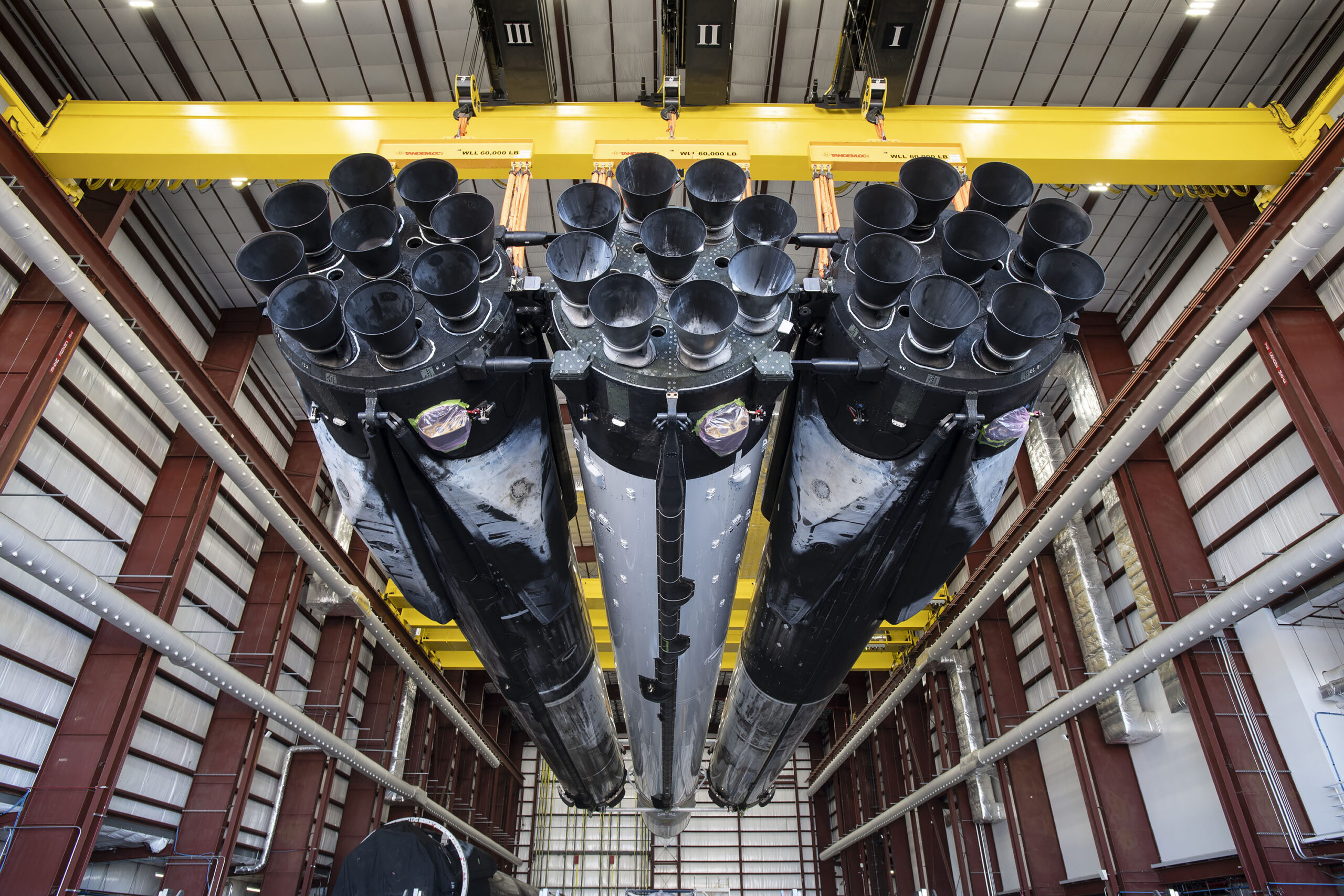
WASHINGTON — SpaceX is aiming to launch Falcon Heavy’s second national security mission for the U.S. Space Force on Jan. 12 from Kennedy Space Center, Florida.
The U.S. Space Systems Command said it plans to release details of the launch window 72 hours before scheduled liftoff. The mission, named USSF-67, comes on the heels of USSF-44, which flew to geostationary Earth orbit on Nov. 1 and marked Falcon Heavy’s first national security launch.
A picture posted by SpaceX on Jan. 7 — showing Falcon Heavy’s three Falcon 9 cores — confirms the company is readying for an upcoming launch. “Falcon Heavy in the hangar at Launch Complex 39A,” the company said on Twitter.
SpaceX received a $316 million contract in August 2020 to launch USSF-67
Falcon Heavy’s two side boosters that were recovered after USSF-44 will be reused for USSF-67. SpaceX will attempt to land both boosters at Cape Canaveral’s Landing Zones 1 and 2. The center core will not be recovered.
The mission will carry two payloads: the Continuous Broadcast Augmenting SATCOM (CBAS)-2 and a Long Duration Propulsive ESPA ring, a spacecraft that can carry up to six small satellites.
The Space Systems Command describes CBAS-2 as a military communications satellite that provides “communications relay capabilities to support our senior leaders and combatant commanders by augmenting existing military satellite communications capabilities.” Specific capabilities and features are classified.
CBAS-1, made by Boeing, was launched to geostationary orbit in 2018 on the AFSPC-11 mission aboard a United Launch Alliance Atlas 5 rocket.
The other payload, LDPE-3A, will be the third launch of this version of the ESPA ring designed by Northrop Grumman. The first one launched in December 2021 on a Space Test Program STP-3 mission aboard an Atlas 5. The second launch was on USSF-44.
The Space Systems Command said LDPE-3A was built with an ESPAStar, which is similar to an ESPA ring but with added propulsion, power and avionics so it can operate as a fully functioning satellite. “LDPE provides an affordable path to space for both hosted and separable payloads.”
Lt. Col. Michael Rupp, head of the LDPE program at Space Systems Command, said Dec. 6 that the command was on track to “launch two satellites within 70 days of one another, which is fantastic from a program perspective.”
Related
ncG1vNJzZmiroJawprrEsKpnm5%2BifLS8wJycsWWXmq6ztc2gZK6oXZu8s3nFmqOcp55itaat1bKqZquVmLyvsIynmK2hn6OurXnSnpquqpmpxm64wK6lnKBf